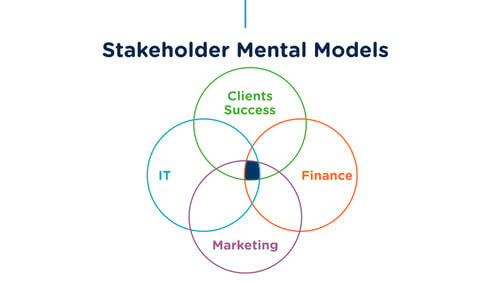5 min read
Research indicates that employers are investing $46 billion globally on employee reward and recognition initiatives, but 87% of this is spent on recognizing tenure. More still needs to be done to truly move the needle on employee engagement. Why? Because the modern workforce expects continuous recognition that's embedded in company culture and a part of their everyday.
What often stops people from implementing a world-class employee recognition program? The elusive tick of approval.
After supporting over 2,500 companies in delivering an exceptional employee engagement experience to almost 5 million users, we’ve learned a thing or two about pitching the idea of a new employee recognition program, and getting even the most skeptical leaders to sign the dotted line. Here are six things to consider on your way:
1. Engage them early
Depending on the familiarity your leadership team has about employee engagement and the importance of recognition in your Employee Value Proposition (EVP), you’ll likely need to invest extra time in educating your stakeholders.
It’s critical to get your stakeholders engaged with the process early, understand their priorities and solicit their feedback.
Forward-thinking HR leaders know that gaining buy-in is more complex than ever before – but instead of being deterred, they embrace the challenge. Doing your homework early will enable you to overcome obstacles, and ultimately set you up for success when it comes time to pitch.
2. Start with WHY
You should be able to answer the questions: Why now, why this initiative and why is it so important to our organization’s success?
A common thread across many of the HR leaders I’ve been speaking to this year is the need to evolve quickly to gain an edge when it comes to attracting and retaining talent. There is a lot of competitiveness, especially in the tech industry, and many organizations are vying for the best people. So employers are looking for ways to stand out and improve their Employee Value Proposition.
3. Put yourself in their shoes
Today, HR professionals require buy-in from an average of 5.7 stakeholders – often this includes leaders in the finance, IT and even marketing teams. The challenge is that with every additional stakeholder that needs to sign off on your business case, the likelihood of approval drops significantly.

While it’s still important to meet with each stakeholder, rather than building a business case that targets their individual’s objectives, it’s more effective to focus on how your employee engagement efforts will address and benefit the areas where the interests of your stakeholders overlap.
To gain buy-in and encourage long-term, impactful culture change with your program, spend time looking for common ground and focus your attention on where your stakeholders can agree on a common vision, purpose and advantage.

4. Leverage the right data
The most successful business cases always include the high-level facts around the return on investment (ROI) of your recognition investment – tangible measures like sales and revenue. It also means talking about the value on investment (VOI) – intangible measures like employee anecdotes and morale.
Every investment comes with a cost, but if you can prove a high return on that cost, your proposal’s value becomes much more attractive.
Bottom line, show the decisions makers WIIFM (what’s in it for me) and answer that key question: What will your actions do for the business?
5. Master your timing
Keeping a finger on the pulse of what the current climate of your leadership team is (what they’re dealing with, and when) will clue you into when’s the right time to present your proposal.
Is there a seasonal opportunity you can leverage to maximize the impact for your employees?
I know a number of organizations who’ve opted to introduce employee engagement programs to start the new year off with a fun and exciting launch and then continue to promote it as something employees can take advantage of all year around.

6. Don’t be an island
First, find ways to integrate what you are proposing into other business or HR initiatives and consider how your initiative will support or align with other key initiatives. This not only helps you create a more compelling story, but your business leaders will respect you for this.
Second, connect with other HR leaders who are experiencing success in this space and leverage their knowledge and experience. One of the things I really enjoy about working with an organization like Reward Gateway is that the Client Success Team is really generous about sharing ideas that will help organizations succeed in improving the take-up of their existing programs - we share those best-practice tips and inspiration on our Reward Gateway blog, along with advice for how to evolve and refine what employers are offering to keep their people engaged in the long-term.
Remember, you are not the first HR Leader to pitch what seems like a crazy idea to improve your employee experience, and you won't be the last!
Stay determined, informed, consultative and put yourself in your leaders' shoes, and you'll know exactly how to bring a strong proposal to the table. And importantly, you'll get the sign of approval you need to get it across the line.
Need some one-on-one support in building your business case for investing in your employee engagement initiative? Get in touch with our team!

 George Dixon
George Dixon


